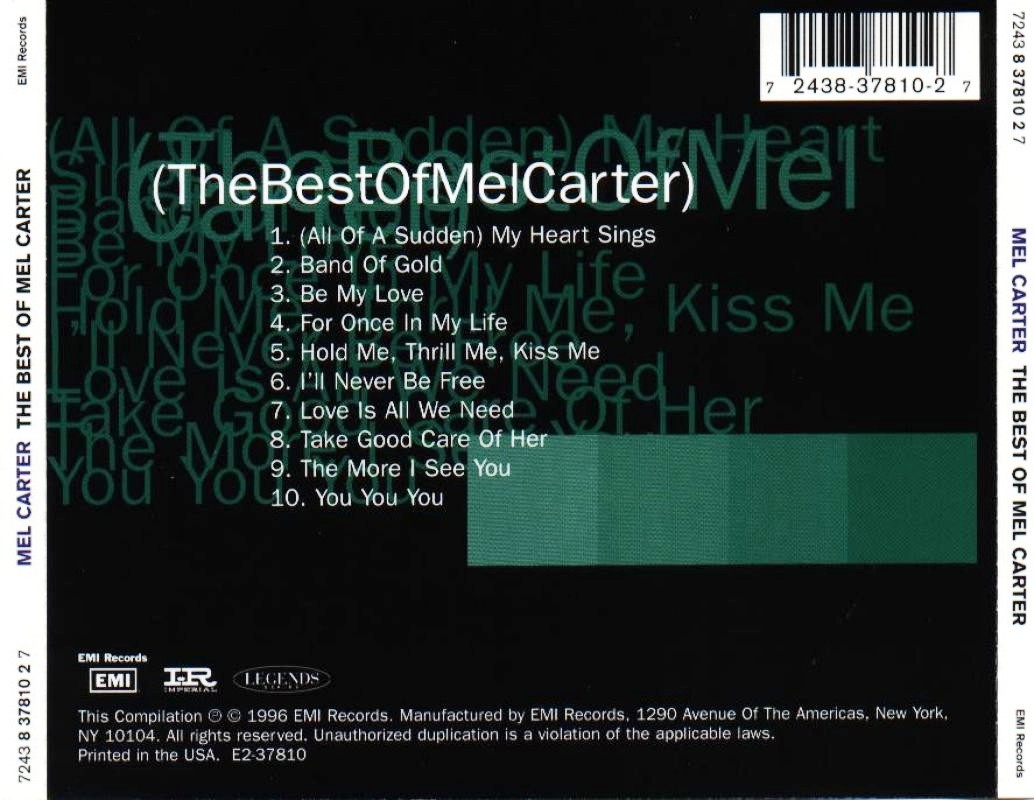

While putting the vocals together, Fuqua and Bristol ediied out the backing vocals so that the voices of Terrell and Gaye were dominant. Producers Harvey Fuqua and Johnny Bristol recorded Terrell and Gaye separately and then remixed their vocals. The duo’s first major success was “Ain’t No Mountain High Enough,” written by Nick Ashford and Valerie Simpson. Thinking that Tammy Montgomery might be too long of a name to put on a 45, Gordy changed her name to Tammi Terrell because he felt that it “screamed sex appeal.” Terrell joined the Motortown Revue after releasing her first single, but she didn’t have any big hits until pairing with Marvin Gaye. Gordy signed her to Motown on April 29th, her 20th birthday.īefore releasing her first Motown single, Gordy suggested a name change. while performing with Butler at the Twenty Grand Club in Detroit. In April of 1965, she was spotted by Berry Gordy Jr.
Mary wells greatest hits rar series#
While still in school, she was asked by Jerry Butler to sing with him in a series of shows in nightclubs.

Tammy Montgomery went on to sign with Checker Records, but when her lone single failed to chart, she semi-retired from music and enrolled in a pre-med program at the University of Pennsylvania. Tammy also recorded for Brown’s Try Me label, but she reportedly left Brown after their relationship became abusive. Shortly thereafter, she spent 9 months as a member of James Brown’s Revue. Born Thomasina Montgomery in 1945, she changed her first name to Tammy after signing with Scepter/Wand Records and releasing her first single in 1961. In early 1967, Motown paired Marvin Gaye with Tammi Terrell. These included “Dancing In The Street,” “It Takes Two,” “What Becomes Of The Brokenhearted,” “Uptight (Everything’s Alright),” and “Devil With A Blue Dress On.” In addition, Stevenson wrote and produced many hit records for Motown, some with co-writer and producer Ivy Jo Hunter. He had joined the label as the head of its A&R department in 1959, and he was responsible for organizing and establishing the company’s in-house band, which later became known as the Funk Brothers. Stevenson was a bigger loss for Motown than Weston. The duo recorded the Stevenson-produced album titled “Take Two” which contained the hit single, “It Takes Two.” The song reached # 14 on the Hot 100 and # 4 on Billboard’s R&B chart in early 1967, but both Stevenson and Weston left Motown and signed with MGM Records later that same year. In 1966, he was paired with Kim Weston, wife of songwriter/producer Mickey Stevenson. Gaye continued to have great success as a solo artist scoring major hits with “How Sweet It Is (To Be Loved By You),” “I’ll Be Doggone,” and “Ain’t That Peculiar”. Wells won her lawsuit and went on to sign with 20th Century Fox Records in 1965. She had been dissatisfied with the contract she had signed when she was just 17 and sued the label, claiming that her contract was invalid because she was a minor when she signed. Mary Wells turned 21 in the spring of 1964 and surprised everyone at Motown when she decided to leave. The winning combination of Gaye and Wells was short-lived, however. The only Motown-penned songs on the album, “What’s The Matter With You Baby” and “Once Upon A Time,” were released as a single and became a two-sided pop hit for Gaye and Wells with the former reaching # 17 and the latter # 19 on Billboard’s Hot 100. Containing mostly standards and show tunes, the album reached # 42 on Billboard’s Pop Albums chart. “Together,” the first and only studio album released by Marvin Gaye and Mary Wells was released on the Motown label in April of 1964.

Motown also saw the potential in Marvin to be half of a powerhouse duet team with Mary Wells, the label’s biggest female star who had just had her first # 1 hit with “My Guy.” This dream team, in Berry Gordy’s mind, would double the potential customer base for both albums and singles. The hits continued in early 1964 when Gaye’s recording of “You’re A Wonderful One” hit # 3 on the R&B charts and # 15 on the Hot 100. Marvin Gaye soon established himself as Motown’s top male solo artist, and he proceeded to chart four consecutive R&B hits starting with “Pride And Joy” which crossed over to # 10 on the Hot 100 in 1963.

Motown indulged Marvin briefly before nudging him toward more uptempo material like his first R&B hit “Stubborn Kind Of Fellow” in 1962. Although he had broken in professionally singing doo wop with the Marquees and, more importantly, the Moonglows, he preferred the sound of jazzy vocalists such as Nat King Cole and Frank Sinatra. When Marvin Gaye first signed with Motown in the early 1960s, he wasn’t particularly interested in recording R&B music.


 0 kommentar(er)
0 kommentar(er)
